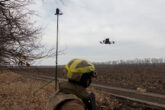October 19, 2021
Why the Pentagon Should Abandon ‘Strategic Competition’
Nearly every child is taught when making a request to “say the magic word”: please. The U.S. Defense Department has recently been taught it too needs to say the magic word in every force, capability, or resource request. But the magic word isn’t please; it’s the phrase “strategic competition.”
The National Defense Strategy (NDS) sets U.S. military priorities and is produced every four years to align with a new administration. As the Pentagon develops the next NDS, scheduled to be delivered in February 2022, it has an opportunity to right where the last strategy went wrong: the concept of strategic competition.
The Pentagon will need to make sure that one magic word or concept is not substituted for another.
The 2018 NDS ushered in an era in which long-term “inter-state strategic competition” with China and Russia reigned. Further complicating matters, Trump administration officials often interchangeably used the phrase great-power competition to describe this development. The concept became a priority mission without a clear definition of what it meant, the actions that comprised it, or what “winning” the competition looked like. Although this might seem innocuous, the establishment of this broad, undefined mission for the Defense Department has had deleterious effects and undermined the strategy’s original intent.
The Biden administration reportedly favors the strategic competition terminology but is differentiating their idea from the Trump-era concept. Although administration officials maintain that strategic competition conveys a focused and disciplined approach, it is likely to have the reverse effect as competition is not a means nor an end in itself. The Trump administration at least emphasized competition with great powers, which delineated the important threats and deprioritized threats like North Korea, Iran, and terrorism. The Biden administration, therefore, appears to be making the next NDS’s centerpiece a term that is even broader and fuzzier than its predecessor.
Read the full article from Foreign Policy.
More from CNAS
-
Defense / Transatlantic Security
When Defense Becomes Destruction: Austria-Hungary’s Mistake and Ukraine’s RiskThis article was originally posted on War on the Rocks. The southeastern Polish city of Przemyśl, with its elegant 19th century Habsburg-era train station, remains one of the ...
By Franz-Stefan Gady
-
Defense / Transatlantic Security
Ukraine’s Catch-22 MomentThis article was originally published in the Financial Times. In Joseph Heller’s wartime classic, Catch-22, the protagonist Yossarian seeks out the US army surgeon Doc Daneeka...
By Franz-Stefan Gady
-
CNAS Insights | Budgetary Own Goals Undermine “Speed and Volume”
On November 7, Secretary of Defense Pete Hegseth laid out a plan to overhaul the Department of Defense’s (DOD’s) acquisition system. Placing an emphasis on delivering new capa...
By Philip Sheers, Carlton Haelig & Stacie Pettyjohn
-
Drones: Who Is Making the New Weapons of War?
From Ukraine and Russia to Gaza and Sudan, drones have become a key weapon of war. Which companies are making them, and profiting from this rapidly expanding but controversial...
By Stacie Pettyjohn




